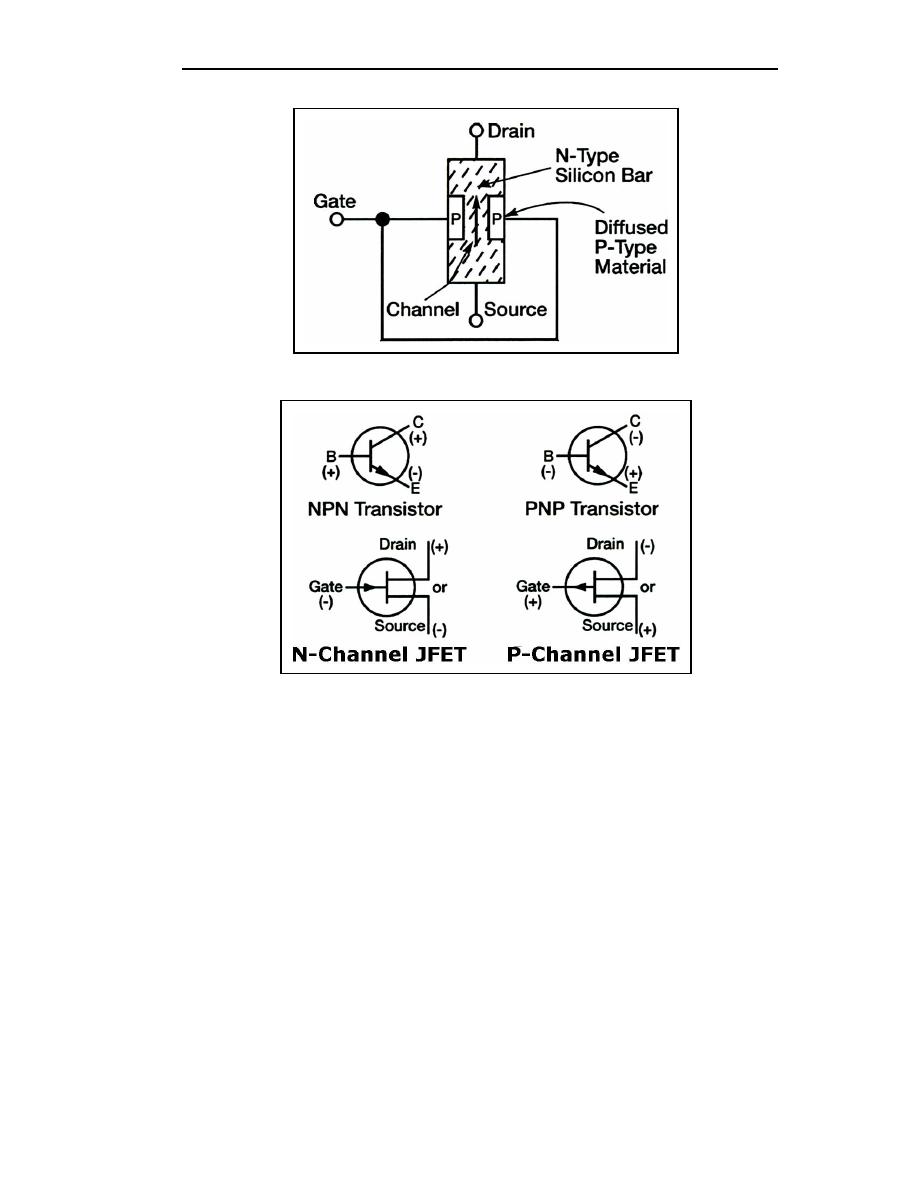
TC 9-62
Figure 3-45. JFET Structure
Figure 3-46. Symbols and Bias Voltages for Transistors and JFET
3-78. Figure 3-47 shows how the JFET operates in a zero gate bias condition. Five volts
are applied across the JFET so that current flows through the bar from source to drain, as
indicated by the arrow. The gate terminal is tied to ground. This is a zero gate bias
condition. In this condition, a typical bar represents a resistance of about 500 ohms. A
milliammeter, connected in series with the drain lead and DC power, indicates the amount
of current flow. With a drain supply (VDD) of 5 volts, the milliammeter gives a drain
current (ID) reading of 10 milliamperes. The voltage and current subscript letters (VDD, ID)
used for a FET correspond to the elements of the FET just as they do for the elements of
transistors.
3-79. In Figure 3-48, a small reverse-bias voltage is applied to the gate of the JFET. A
gate-source voltage (VGG) of negative 1 volt applied to the P-type gate material causes the
junction between the P- and N-type material to become reverse biased. Just as it did in the
junction of the JFET. Since this region has a reduced number of current carriers, the effect
of reverse biasing is to reduce the effective cross-sectional area of the "channel." This
reduction in area increases the source-to-drain resistance of the device and decreases
current flow.
3-28
TC 9-62
23 June 2005



 Previous Page
Previous Page
